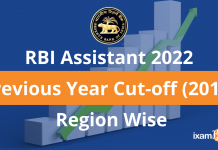Growth is the driver of any country’s development. What if the growth stucks in a trap and endangers a country’s economic growth. Many economists believe that India runs the risk of getting caught in this growth stuck trap and runs the dangers of entangling into the Middle-Income trap in the medium to long term. PM Narendra Modi’s economic advisory council former member, Rathin Roy also stated his concern some years ago that India runs the risk of getting caught in the middle-income trap. He stated that “The country’s growth has mostly been driven by the demand generated by the richest 100 million Indians. As this demand cannot keep growing infinitely, a failure to broaden the income base—and, therefore, the demand base or the market size—could act as a growth barrier, resulting in India slipping into a middle-income trap.”
Let’s get into some crisp content on Middle Income Trap
What Is a Middle Income Trap?
The term “Middle Income Trap” was coined by Economists Indermit Gill and Homi Kharas at the World Bank, in 2006 while working on growth strategies for East Asian economies. The Middle Income Trap is a theoretical economic development situation in which a country that attains a certain income (due to given advantages) gets stuck at that level. Such countries are not able to move up to the Higher income levels due to several adverse factors. In other words, low-income countries with access to ready-made technology and cheap workforce grow faster and become wealthier but once they reach middle-income status, they tend to slow down and fail to converge with wealthier nations. Thus not able to go beyond middle-income status.
Basis of Classifying Nations into various categories
GNI or Gross National Income forms the basis of classifying countries into various income categories. The World Bank using 2018 data of GNI per capita classified countries into four categories
- Low income – GNI per capita is up to $1,025
- Lower middle-income – GNI per capita ranges between $1,026 to $3,995. India falls under this category
- Upper middle-income – GNI per capita between $3,995 and $12,375. Example -China
- High income – GNI per capita above $12,375. Example – US, Germany
India’s Concern for Middle Income Trap
India entered the Middle-Income level in 2008 and stats say that India’s income per capita growth is taking at the same pace as they have in the past 30 years. Thus India may reach the lower end of the upper middle-income status till 2038. But what are the factors that make India fall into the Middle Income Trap?
- Growth productivity collapse
- Thwarted infrastructure and Structural Transformation
- Unfriendly macroeconomic conditions
- Climate Change environmental stress
- Demographic disadvantages
- Private consumption fall
Way Ahead
India is now a middle income country, with 15 years of high growth. Can India enhance this growth to avoid falling into the “middle income trap” that has plagued other emerging nations? What can be done to ensure it does not fall deeper into a middle income environment trap? We need to get serious about reforms at various levels so that this trap is avoided.
- Identifying strategies to introduce new processes
- Finding new markets to maintain export growth
- Economic Management decentralization
- Macroeconomic stability sustainability
- Transitioning from diversification to specialization in production
- Ramping Domestic demand
- From resource-driven growth to growth based on high productivity and innovation
- Infrastructure and education investment
- Addressing hurdles to effective competition
This topic is especially useful for forming your opinion in Descriptive Subjects and/or interviews. Do comment if you would want more information on the same. At ixamBee, you can find free Online Test Series, GK updates in the form of BeePedia, as well as latest updates for Bank PO, Bank Clerk, SSC, RBI, NABARD, and Other Government Jobs.
Also Read














